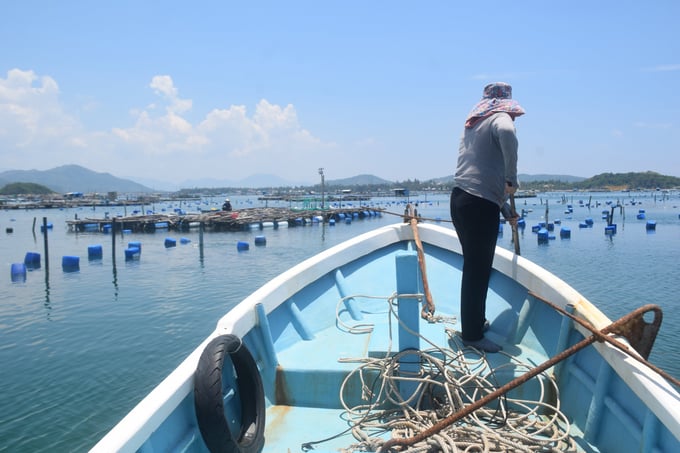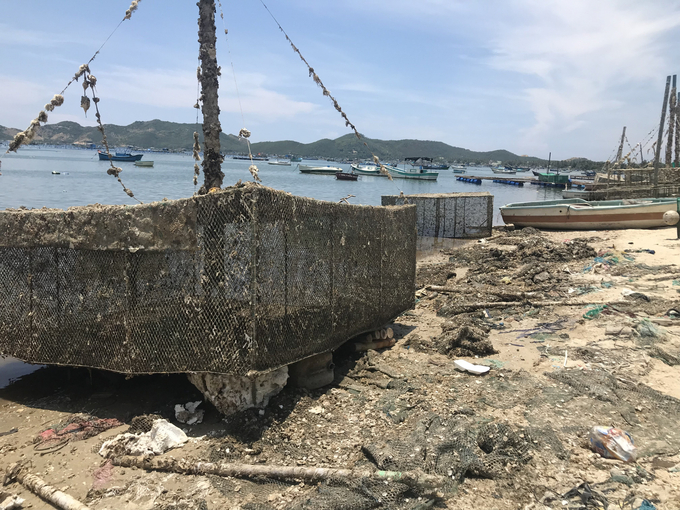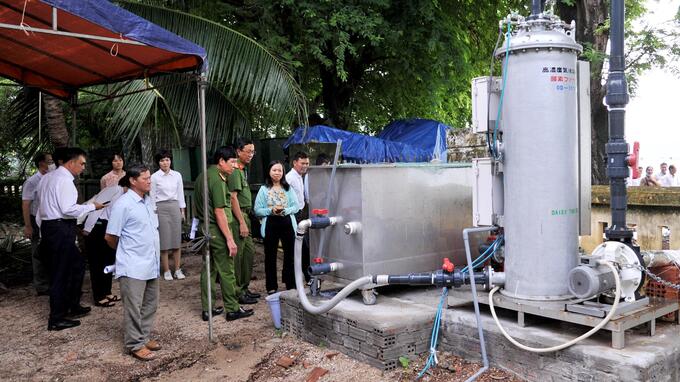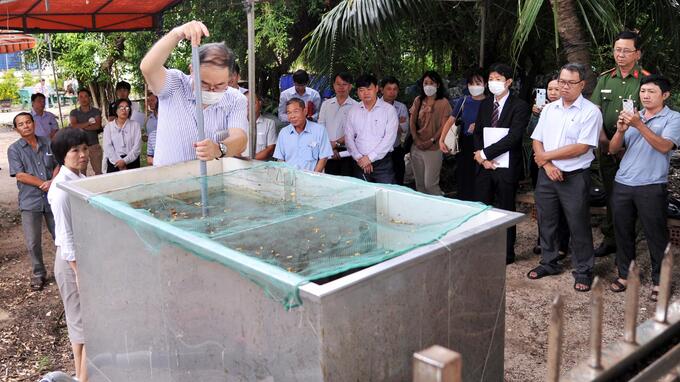More than 620 tons of food are thrown away every day, Xuan Dai Bay is polluted
According to the Song Cau (Phu Yen) City People’s Committee, lobster farming in the area has developed over the years into an important economic sector of the area, making great contributions to the socio-economic situation, providing stable jobs and contributing to the development of the local community Increase in income for the majority of people in the region. However, lobster farming is currently facing many challenges such as management of seed sources, feed, breeding areas, natural disasters, epidemics, especially the environment in breeding area is seriously polluted.

Cage Aquaculture Area in Song Cau City. Picture: Kim So
According to Ms. Le Thi Hang Nga, deputy director of Phu Yen Fisheries Subdivision, the entire province has 87,000 lobster cages in the six months of 2022, of which Song Cau City has 62,690 cages. During the rearing process, people mainly use fresh foods, including waste fish and crustaceans and mollusks for lobsters, the quality of which is not guaranteed, which has affected the environment in the rearing area.
It is estimated that each lobster cage requires an average of around 8kg of fresh food per day. So, with the above number of cages, almost 700 tons of food is needed every day, about 620 tons in Xuan Dai Bay alone. With excess feed plus shrimp manure, a large amount of waste is released into the environment every day, causing increasing pollution of the breeding area.
dr Thai Ngoc Chien (Aquaculture Research Institute III) said that the research released about 395 kg of total nitrogen (N) into the environment when raising 1 ton of lobster. Therefore, the amount of waste N released into the aquatic environment accounts for about 30% of shrimp production, and the average annual lobster farming in Phu Yen releases about 250 tons of N into the environment. Therefore, for lobster farming in For the sustainable Development of Phu Yen, it is necessary to evaluate the environmental capacity. This provides the basis for allocating the appropriate number of cages for each specific region.

The fish farming area in Xuan Dai Bay is increasingly polluted by fresh and surplus food. Picture: Kim So
Nguyen Thai Hoa, deputy director of the Ministry of Natural Resources and Environment in Phu Yen, said most of the waste generated in the province’s aquaculture areas has not been collected and treated. The whole province has just launched a pilot model of aquaculture waste collection in Xuan Phuong and Xuan Yen Districts (Song Cau City), but still faces many difficulties, confusion and low efficiency.
According to the head of the Ministry of Natural Resources and Environment of Phu Yen, seawater quality monitoring along the coast, lagoons and bays in the province has 72 sites, including 47 in lagoons and bays; 25 coastal locations, mainly analyzed 11 parameters. There are 18 monitoring sites in Xuan Dai Bay, the parameters often exceed the standards such as NH4+, TSS, PO43, Coliform.
New technology to treat pollution in fish farming areas
According to the Phu Yen Department of Natural Resources and Environment, in 2019, JICA officially approved the Xuan Dai Bay Pollution Treatment Assistance Project. Since then, JICA Daiei Factory Co., Ltd. and Nippon Koei Co., Ltd (Japan) was selected to carry out Phase 1 (test phase) in 2020, the project’s activities had to be postponed and restarted from February 2022 to the present.

Japanese partners are using oxygen dissolving machine technology to treat the environment in Xuan Dai Bay. Picture: Kim So
This project will be used by the Japanese partner to apply oxygen dissolving machine technology to treat the environment, increase the concentration of dissolved oxygen in water and eliminate odors in mud and water in Xuan Dai Bay.
Mr. Michio Morita, Chairman of Daiei Factory Co., Ltd., said that the technology of dissolving oxygen gas to treat the aquaculture environment used by the company in Xuan Dai Bay is new technology and advanced equipment.
Accordingly, this technology will inject water from Xuan Dai Bay (treatment area) directly into the treatment machine system, and flow directly through gaseous oxygen stirred to dissolve oxygen directly, thereby producing high-quality water containing high concentrations of oxygen. This technology mainly supplies oxygen for water and cleans the sludge bottom in polluted aquaculture areas. This environmental treatment technology has been applied by the Hai Phong company to improve the quality of aquaculture water and shrimp farming to achieve higher productivity and quality.

The pollution treatment project initially gave positive signals. Picture: Kim So
Mr. Lam Duy Dung, vice chairman of Song Cau City People’s Committee, assessed that the project to support pollution treatment in Xuan Dai Bay with oxygen dissolving machine technology initially brought very positive results. In particular, as a result of the results of environmental monitoring in the machine installation area, the concentration of dissolved oxygen in the water increased and the odor of the water decreased.
Therefore, this technology can be used to treat the aquatic environment for aquaculture and lobster farming especially in Xuan Dai Bay and lagoons and bays in the province in general. However, the project has just completed the pilot phase, the scale is still small, the operating time is short, and the effectiveness of the equipment has not yet been fully evaluated when the equipment is used on a large scale. Therefore, the locality would like the Japanese partner to further explore and support the implementation of environmental treatment in larger aquaculture areas in the region.
Mr. Nguyen Thai Hoa, deputy director of the Ministry of Natural Resources and Environment of Phu Yen, said that the Japanese partner has asked Phu Yen Province to prepare a dossier for JICA to approve the implementation of Phase 2 if it still has a need support.
For Phase 2, 5 systems of dissolved oxygen machines will be installed at 5 points around Xuan Dai Bay, each with 3 times the capacity of the machines currently installed in Phase 1. The operating time of phase 2 is 2 years and upon completion the all equipment will be handed over to the municipality.

